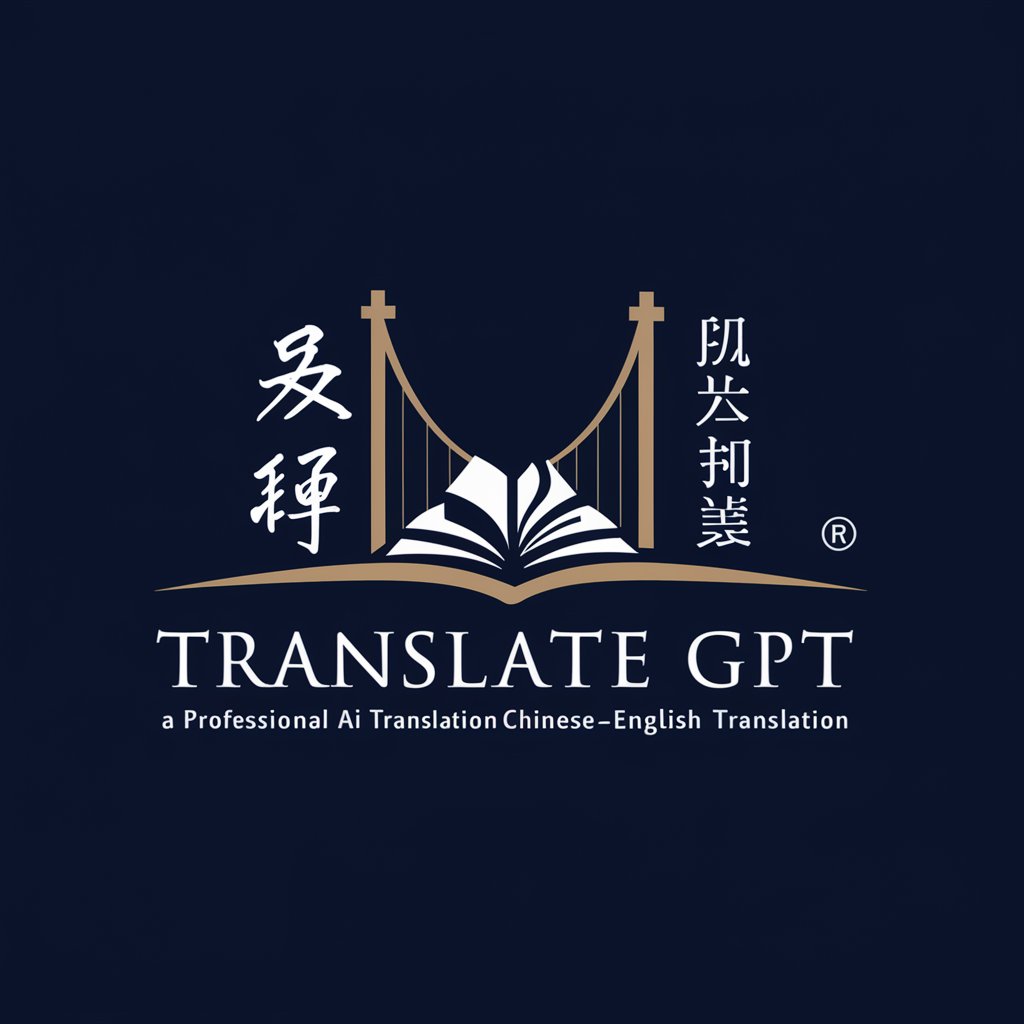
中文paraphrase-Chinese paraphrase generator
AI-powered Chinese paraphrasing that preserves meaning.

Get Embed Code
What is 中文paraphrase?
中文paraphrase is a linguistics‑focused rewriting assistant built to transform Chinese text while preserving the original meaning, facts, and intent. It replaces words with context‑appropriate synonyms, restructures sentences (e.g., active↔passive, split↔merge), and reorders information at the paragraph level to enhance readability and reduce similarity to the source—all without altering key details such as time, place, quantities, or named entities. It is purpose‑designed for tasks like academic paraphrasing, content localization, style unification, and clarity improvements. Illustrative micro‑example: • Input (CN): “该公司昨天在上海发布了新款手机,定价3999元,主打长续航。” • Output (CN): “这家企业于昨日在上海推出一款新手机,售价为3999元,卖点是电池续航时间更长。” Here, wording and structure shift while facts (yesterday/Shanghai/3999 RMB/long battery life) stay intact.
Core Capabilities and Applied Uses
Meaning‑preserving rewriting with style and tone control
Example
Input (CN, formalize): “我们团队搞了很多实验,结果挺不错的。” → Output (CN): “本团队已开展多项实验并取得令人满意的结果。”
Scenario
A research assistant needs a draft section to sound academic while retaining the original claim. 中文paraphrase elevates中文paraphrase functions register (colloquial→scholarly), keeps semantics unchanged, and standardizes terminology across a manuscript, report, or policy document.
Structural transformation (reordering, splitting/merging, active↔passive) for readability and anti‑plagiarism
Example
Input (CN): “由于样本量不足,研究无法得出有效结论,但我们仍报告了初步发现。” → Output (CN, split + reorder): “样本量有限,限制了结论的有效性。即便如此,我们仍报告了若干初步发现。”
Scenario
An editor must reduce similarity to a source article while improving flow. 中文paraphrase breaks long sentences, rearranges clause order, or converts active to passive so the passage reads naturally yet remains faithful to the facts.
Constraint‑guided paraphrasing (preserve key entities; adjust length; audience adaptation)
Example
Constraints: keep dates/locations/numbers; shorten by ~30%; target general audience. Input (CN): “本研究于2024年6月至2025年1月在北京三家医院进行,共纳入418例受试者。” → Output (CN, concise): “2024年6月至2025年1月,我们在北京三家医院纳入418名受试者开展研究。”
Scenario
A communicator prepares a press release from a technical report. 中文paraphrase compresses wording, preserves critical data (time/place/quantity), and adjusts complexity so non‑specialists can understand the message without losing accuracy.
Who Benefits Most
Academic writers, students, and research staff working in Chinese
They often need to restate literature or rewrite drafts to improve clarity and reduce textual similarity while strictly preserving facts, citations, and domain terms. 中文paraphrase helps rephrase dense passages, harmonize tone across sections, and maintain consistency in dates, locations, and quantities—useful for theses, articles, and grant proposals.
Editors, marketers, and localization teams producing Chinese content
They must adapt existing material to new channels and audiences (web, app, social) without altering intent. 中文paraphrase quickly reshapes copy for different tones (formal, neutral, conversational), lengths (taglines vs. long‑form), and readability levels, while safeguarding key product claims, compliance statements, and brand terminology.
How to use 中文paraphrase
Visit aichatonline.org for a free trial without login, also no need for ChatGPT Plus.
Open the site to access 中文paraphrase instantly—no signup or paid plan required for testing.
Prepare your text & intent
Collect the source passage (sentences, paragraphs, or full articles). State goals like “preserve dates/figures,” “shorten 20%,” “formal tone,” or “simplify for non‑experts.” Avoid pasting sensitive or confidential data.
Set rewrite controls
Specify rewrite strength (light/moderate/deep), tone (academic, business, friendly), structure options (merge/split sentences, reorder ideas), and guardrails (keep citations, names, numbers, and terminology unchanged).
Generate, compare, refine
Review side‑by‑side: confirm meaning, facts, and nuance match the original. Request targeted tweaks (e.g., “more concise topic sentence,” “use passive voice,” “clarify step 3”). Iterate until fluent and faithful.
Validate & export responsibly
Run a quick fact/number check, ensure sources are cited when required, and note that paraphrasing is for clarity—not to evade integrity rules. Copy the final text into your document orHow to use 中文paraphrase CMS.
Try other advanced and practical GPTs
LO-FI 音楽画像クリエーター
AI-powered city-pop visuals for chill music.

Juice WRLD Lyricist
AI-powered Juice WRLD lyric generation tool.

AI美女画像のプロンプト作成
Create stunning AI-generated images effortlessly

A Cloud Expert
AI-powered support for your needs.

C++ (Cpp)
AI-powered C++ learning and development tool

PinCraft Marketer
AI-powered Pinterest pin copy and image prompts to boost clicks.

ケース面接bot
AI-powered case interview strategy builder

Midjourney提示词优化
Enhance Your Midjourney Results with AI

Exotic Vet Assistant
AI-powered guidance for exotic animal care.

Trivia GPT
AI-powered trivia that writes, explains, and plays.

Speculative Chat Device ver.0.4
AI-powered conversation for diverse tasks.

Kubernetes Expert (K8s, K3s, K3d & more)
AI-powered Kubernetes management made simple.

- Academic Writing
- Social Media
- Marketing Copy
- Business Emails
- Technical Docs
中文paraphrase — Detailed Q&A
What makes 中文paraphrase different from a generic rewriter?
It focuses on Chinese linguistic nuance: preserving semantics while varying vocabulary, syntax, and discourse order. It can merge/split sentences, shift voice, and adjust tone—all while safeguarding critical details like dates, names, places, and numbers.
How can I control tone, length, and structure in the output?
Include constraints such as tone (academic, formal, business, friendly), target length (e.g., −20% words), and structural moves (reorder paragraphs, collapse redundancies, or expand key points). You can also request passive/active voice, simpler wording, or domain‑specific terminology retention.
Can it handle technical or academic content with citations and formulas?
Yes—provide clear instructions to keep citations, equations, and specialized terms unchanged. It paraphrases narrative text around them, maintains logical flow, and preserves labels, units, and symbol meanings without inventing references.
Is paraphrasing guaranteed to bypass plagiarism detectors?
No. The goal is clarity and originality of expression while keeping meaning intact—not evasion. Always cite sources when required. Use 中文paraphrase to improve readability, cohesion, and style, and to restate ideas ethically.
What inputs work best, and will it translate?
Best with Chinese or mixed Chinese‑English texts, including essays, emails, reports, and social posts. It primarily paraphrases in Chinese; you may request bilingual outputs or simplified/Traditional variants. For optimal results, provide context, audience, and must‑keep elements.






